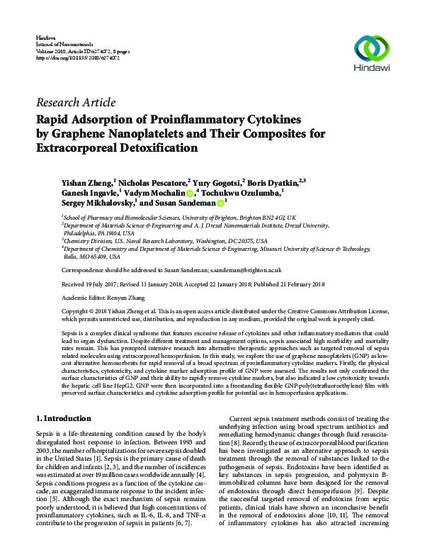
Sepsis is a complex clinical syndrome that features excessive release of cytokines and other inflammatory mediators that could lead to organ dysfunction. Despite different treatment and management options, sepsis associated high morbidity and mortality rates remain. This has prompted intensive research into alternative therapeutic approaches such as targeted removal of sepsis related molecules using extracorporeal hemoperfusion. In this study, we explore the use of graphene nanoplatelets (GNP) as low-cost alternative hemosorbents for rapid removal of a broad spectrum of proinflammatory cytokine markers. Firstly, the physical characteristics, cytotoxicity, and cytokine marker adsorption profile of GNP were assessed. The results not only confirmed the surface characteristics of GNP and their ability to rapidly remove cytokine markers, but also indicated a low cytotoxicity towards the hepatic cell line HepG2. GNP were then incorporated into a freestanding flexible GNP-poly(tetrafluoroethylene) film with preserved surface characteristics and cytokine adsorption profile for potential use in hemoperfusion applications.
- Cell culture,
- Detoxification,
- Graphene,
- Polytetrafluoroethylenes, Adsorption profile,
- Different treatments,
- Graphene nanoplatelets,
- Inflammatory mediators,
- Intensive research,
- Physical characteristics,
- Proinflammatory cytokines,
- Surface characteristics, Adsorption
Available at: http://works.bepress.com/vadym-mochalin/75/
